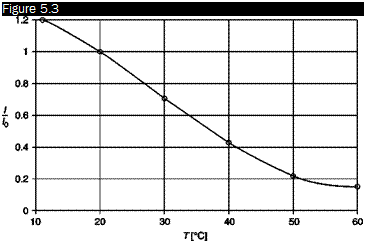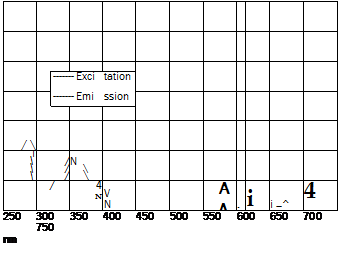Temperature-sensitive paints (TSP)
The temperature of a body can be measured by using temperature-
sensitive paints, and these may be, in order of increasing performance:
■ phase-change paints whose basic component is a wax: an isotherm is identified by the line of separation between the solid and liquid phases. With these paints, it is only possible to identify areas of the body that are at temperatures below or above the melting temperature of the wax; the coating can be used only once.
■ multi-component paints: each component undergoes a color change at a specific temperature and hence each isotherm is identified by a line of separation between two different colors. In the areas between two isotherms, it can be argued that the temperature is between the two values. The color change is irreversible, so the coating can be used only once.
■ a reversible color change can be produced with a coating of liquid crystals. Temperature changes alter the molecular structure of these crystals causing a change in the wavelength, and then in the color, of the scattered light.
■ temperature-sensitive paints (TSP) are fluorescent elements (phosphorus), analogous to the pressure-sensitive paints, which, stimulated with an appropriate radiation, emit light whose intensity decreases with temperature (Figure 5.3); the emitted light is of a wavelength
 |
Typical dependence of the light intensity emitted by a TSP on temperature
 different from that of the exciting light, for example (Figure 5.4), a paint excited with ultraviolet light (280 г 390 nm) emits red light (580 г 630 nm). This feature makes it possible to filter the incident light and measures only the emitted light. Paints have been developed to measure temperatures ranging from ambient up to 1000°C.
different from that of the exciting light, for example (Figure 5.4), a paint excited with ultraviolet light (280 г 390 nm) emits red light (580 г 630 nm). This feature makes it possible to filter the incident light and measures only the emitted light. Paints have been developed to measure temperatures ranging from ambient up to 1000°C.
The application of the method is subject to some restrictions:
■ The thermal properties (emissivity and heat transfer) of the surface can be altered by the coating.
■ The need to work in a darkroom or with low light imposes restrictions in applications, but ambient light, as well as exciting light, can be filtered out.
■ The response times of phosphorescence to changes in temperature are important in the study of transient phenomena, they differ greatly from one paint to another but are low enough for phosphorus of the type ZnS-CdS. With a moderately strong ultraviolet excitation, such as that produced by a mercury arc lamp, it is suggested that the response time is less than 0.3 s.













